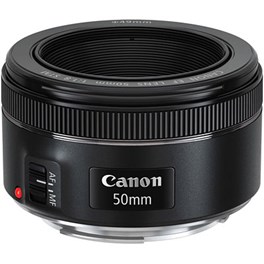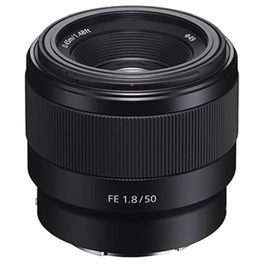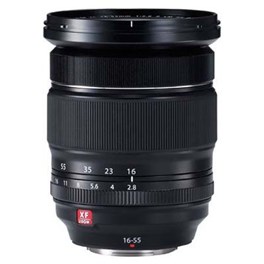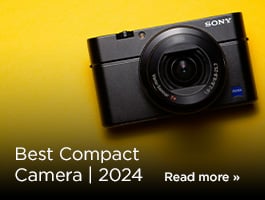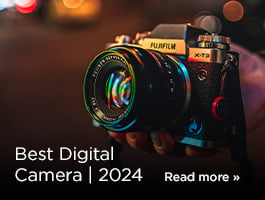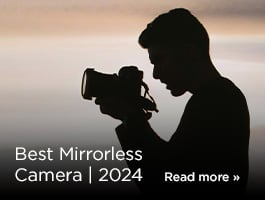
The best lenses for events photography will allow you to capture professional, high-quality images of gigs, concerts and all kinds of occasions. Making the most of available light, and giving you enough reach to clearly capture the stage, these are the lenses that will help you achieve the kinds of images you’re looking for.
Events photography can be challenging — the pressure is on to capture the moment, but you also need to be able to work in the background without getting in the way. In many cases, you won’t be able to use flash, so will have to work with available light, and often you’ll need to use fast shutter speeds to capture your moving subjects.
We’ve focused in particular on lenses that are well suited to gigs and live music events, as these tend to be the most challenging for photographers to capture. However, the lenses on this list will be well-suited to all sorts of events, from corporate retreats to birthday parties. We’ve divided our guide up into different types of lenses according to the types of concert venues they’re best suited for, and provided a few recommendations for different camera systems. So, let’s take a look.
Best lenses for small venues: 50mm primes
These optics are nicknamed “nifty fifties” for a reason: despite being among the most affordable lenses available, they’re the ideal choice for those just starting in music photography and looking to move on from a kit lens.
Pretty much every camera brand has a 50mm f1.8 prime available for under £250, and with their fast apertures, they’ll help you to make the most of the available light in every situation. In dingy pubs where stages have been illuminated by just a few red backlights, a nifty fifty can be a lifesaver.
The shallow depths of field produced by a 50mm lens wide open will mean you’ll have to nail your focus when shooting, but at least you’ll be able to keep your camera’s shutter speed fast enough for sharp shots, and your ISO at a useable level.
If you’re feeling a little more flush with cash, a 50mm f1.4 prime will offer even better light-gathering abilities, albeit with an even shallower depth of field produced. Both these optics also make decent portrait lenses should you be asked to capture any after the show, particularly on crop-sensor devices where their effective full-frame focal length is around 75mms.
Nikon 50mm f1.8 G AF-S Lens
The Nikon 50mm f/1.8 G AF-S Lens delivers stunning image quality and has a fast maximum aperture of f/1.8, making this lens an excellent choice for low-light situations or when shallow depth of field is required. A dedicated Silent Wave Motor (SWM) ensures discreet but accurate autofocus. The Nikon 50mm f/1.8 G AF-S Lens is compatible with both Nikon FX and DX format DSLRs.
£219.00 View
A quintessential nifty-fifty for Nikon DSLRs, this is a lens that any Nikon photographer should have in their back pocket. It does well in low light, and renders good-looking background blur in the defocused areas of images when used wide open. Nikon Z users can opt for the Nikon Z 50mm f1.8 S lens, though if budget is an issue, the DSLR version is cheaper even when bought with the FTZ adapter.
Canon EF 50mm f1.8 STM Lens
The Canon EF 50mm f1.8 STM lens is the successor to the incredibly popular 50mm f1.8 II. Extremely compact and lightweight (160g), the lens features an improved optical design and stepping motor (STM) technology. Its wide f/1.8 maximum aperture and standard 50mm focal length makes it ideal for a wide variety of photographic genres, including travel, portraiture, and everyday creative snapshots.
£129.00 View
One of the cheapest nifty-fifties around, Canon’s EF 50mm f1.8 STM is a mainstay of street and events photography and makes for a perfect companion for either full-frame or APS-C DSLRs (on the latter, it’ll deliver an equivalent focal length of 80mm, which makes for a tighter frame). It focuses fast thanks to the stepping motor system, and creates beautiful bokeh with its seven-blade aperture. Users of the EOS R system should also consider the RF 50mm f1.8 STM, which isn’t much more expensive.
Sony FE 50mm f1.8 Lens
The Sony FE 50mm f1.8 Lens is designed for photographers and videographers looking for a fast, full-frame prime. Weighing in at less than 192g, this lightweight, high-performance lens features a new optical design and delivers all the benefits of a wide aperture prime lens: beautiful, crisp imagery with smooth, circular bokeh for the out-of-focus areas. For extended durability, the lens is built with a solid metal mount.
£159.00 View
A fast, full-frame lens for Sony E-mount, the 50mm f1.8 is an ideal companion for gigs and events. The level of quality it produces is genuinely impressive for a lens at this price, and while the barrel is plastic, the mount is all-metal, which helps with durability and security.
Sigma 30mm f1.4 DC DN Contemporary Lens for L-Mount
A wholly versatile lens, the Sigma 30mm f1.4 DC DN Contemporary Lens exhibits an array of advanced and modern technology that helps to produce outstanding image quality. The lens is equipped with an intricate arrangement of lenses that is complemented by a powerful autofocus system and a high level of flexibility available only by its maximum f1.4 aperture diaphragm.
£279.00 inc. Cashback View
Available fits: L-mount (APS-C), Nikon Z (DX), Canon EF-M, Sony E (APS-C), Fujifilm X, Micro Four Thirds
While this isn’t nominally a 50mm lens, it’s designed for crop-sensor systems, meaning the actual effective focal length is greater than the one stated on the barrel. For most systems like Fujifilm X and Sony E, this lens works out to an equivalent focal length of 45mm; for Canon EF-M it’s 48mm since Canon’s APS-C crop is slightly greater; and on Micro Four Thirds it acts as a 60mm lens.
With a large aperture of f1.4, this lens does a brilliant job in low light, while its fast stepping motor autofocus system delivers excellent performance. The diaphragm has nine blades, which helps with the creation of beautiful bokeh.
Best lenses for small venues: 24mm and 35mm primes
Like their 50mm cousins, these primes offer the bright apertures that are usually essential for coping with low-light shooting situations. While these wider optics tend to be slightly more expensive than nifty fifties, they can help you give an artist room to breathe within the frame, even when you’re standing just a few feet in front of them. Here are a few standout examples.
Olympus M.Zuiko Digital 12mm f2 Lens - Silver
The ZUIKO DIGITAL 12mm 1:2.0 lens offers an equivalent range of 24mm on a 35mm film camera. This Wide angle lens is ideal for the landscape and street photography, but also equally good in normal use. Whether you are taking stills or shooting movies in situations where a tripod or flash would be inappropriate, the maximum aperture 2.0 of the lens will allow you to capture high quality images even in low-light conditions. The lens has a new advanced multi extra-low reflection coating which halves the unwanted flares and effects of ghosting when compared to a conventional coating lens.
£529.00 View
With the Micro Four Thirds crop factor of 2x, this lens is a 24mm equivalent, making it ideal for getting wide-angle gig shots on an MFT camera. Its maximum aperture of f2 gives you a solid level of flexibility in low light, while the exterior elements have been treated with advanced multi extra-low reflection coatings to reduce reflections for greater light transmission and clarity.
Available fits: Canon EF, Nikon F, Sigma SA
Sigma’s Art lenses are designed to prioritise artistic expression above all else, and this one gives you that in spades. Designed for full-frame DSLRs, it’s a versatile lens that excels when used wide open, which is good news for gig and events photographer who often don’t have any choice in the matter. The Hyper Sonic Motor (HSM) technology ensures that autofocusing is quick and quiet.
Best lenses for large venues: 24-70mm f2.8 mid-range zooms
Larger dedicated music venues like the O2 Academies found across the UK tend to have far better stage lighting setups than your local pub, with a good technician behind their desk. Getting well-lit images tends therefore to be much easier.
With more light available, you can start to consider using zooms a bit more, although you’ll still want to try and select lenses with a maximum aperture of f2.8. The one that tends to stay attached to the cameras of many music photographers is a 24-70mm f2.8, which allows for quickly switching between wide scene-setting shots of almost the entire stage, to tighter portraits of individual people.
Panasonic LUMIX S Pro 24-70mm f2.8 Lens
Just Launched
The Panasonic S Pro 24-70mm f2.8 lens a perfect every day, pro-level lens. It offers unlimited creative license with high-quality images as a result. It has been created for use on the L-mount system featured on full frame Panasonic cameras that Wex Photo Video stock. Quality and a maximum F2.8 aperture is ensured across the entire focal range and will not fail to produce high-end images. It is ideal for a large range of type of photography but is particularly useful for landscapes, portraiture and documentary photography.
£1,499.00 View
If you’re shooting events and gigs on the full-frame L-mount system, this Lumix S Pro lens should definitely take priority in your kit bag. Its complex construction of 18 elements in 16 groups includes three aspherical elements and four ED (Extra-low Dispersion) elements, which ensure brilliant image detail and clarity across the whole frame, reducing chromatic aberration.
Sony FE 24-70mm f2.8 GM II Lens
Introducing Sony’s FE 24-70mm f2.8 G Master II Lens. The first iteration of this lens took the photography world by storm, becoming widely regarded as one of Sony’s most versatile lenses. And yet, this lens offers an array of upgrades and refinements that result in truly spectacular, next-level performance. Excelling at both photography and video work, this lens is set to become a Sony classic.
£1,799.00 View
A redux version of one of Sony’s popular G Master lenses, this 24-70mm f2.8 is not the cheapest, but is an absurdly good proposition for events photographers whose budgets can stretch to it. The quality is good enough that you’ve also basically got a 24mm prime lens, and with four XD (Extreme Dynamic) Linear AF Motors, the focusing action is absolutely lightning-fast.
Fujifilm XF 16-55mm f2.8 R LM WR Lens
The Fujifilm 16-55mm f/2.8 R LM WR Fujinon lens is an excellent lens to use and can produce some stunning imagery. It's weather-resistant and features a constant aperture of F2.8 that consists of 17 elements in 12 groups. With these, it is capable of achieving edge-to-edge sharpness across the entire zoom range and the linear motor inside allows fast and quiet autofocusing. This lens is incredibly versatile and can cater to a whole range of photographic opportunities thanks to the wide-angle to medium telephoto zoom. Not only this, but its 9 rounded aperture blades create smooth, circular and beautiful bokeh.
£979.00 View
This gorgeous lens gives you a bit more play at the telephoto end of the zoom, working out to an equivalent focal range of 24-84mm. Its constant aperture of f2.8 means you’ve got that low-light flexibility all throughout the zoom range, and its all-metal construction means it can stand up to the rigours of professional use. One of the best lenses for shooting events on Fujifilm X cameras.
Best lenses for large venues: Ultra-wide angle zooms
If you want to capture the scale and spectacle of a show, then sometimes you’ve got to go as wide as possible. This is where ultra-wide zooms come in. While these lenses don’t let in as much light as a prime, the focal flexibility they offer is highly useful should a band member suddenly loom towards you or dive into the crowd.
You’ll want to try and choose one with a large maximum aperture— ideally f2.8 or greater — to make the most of the available light at all times.
Sigma 14-24mm f2.8 DG DN Art Lens for Sony E
The Sigma 14-24mm F2.8 DG DN Art has been developed as the ultimate large-diameter, wide-angle zoom lens by optimizing the standard specifications for photographing starry skies for full-frame mirrorless cameras. The uniform rendering performance and outstanding resolution to the edge of the frame make it the "definitive lens for astrophotography." By utilizing the characteristics of the short flange focal length, this new-generation large-diameter zoom lens combines both compact body and unprecedented high-resolution image quality.
£1,319.00 View
Available fits: Sony FE, L-mount
A beautifully expressive lens, this mirrorless wide-angle zoom delivers outstanding resolution from edge-to-edge. It’s designed to give brilliant results for astrophotography, but this also means it’s great for capturing the full scale of large gig venues, placing the artists within context for a shot with real wow-factor. The elements have also been treated with super multi-layer coating to make them less susceptible to backlight — which is great news for music and stage photographers.
Nikon Z 14-24mm f2.8 S Lens
Nikon has produced yet another incredibly high-quality and professional Z-mount lens. This lens offers an ultra-wide angle of view and a versatile zoom range which is designed for landscape, architecture and astrophotography. But, despite its main focus, it has a minimum focusing distance of 0.28m which means this lens can be used for close-up photography too. Furthermore, its maximum f2.8 aperture and 9-rounded-blade aperture diaphragm will help to produce beautifully circular and pleasing bokeh, helping the isolation of subjects in your frame. The lens sees various coatings that maintain pin-sharp images and reduced flare and ghosting. Finally, the lens is surprisingly lightweight and compact for an ultra-wide-angle lens and thanks to this profile, Nikon has included a specialised lens hood that allows the use of 112mm screw-on filters, adding to the versatility of this lens.
£1,749.00 View
Pin-sharp, Nikon’s S-line wide-angle zoom is professionally priced, but makes for an invaluable companion for events photography. You can absolutely fill the frame with this zoom, getting as close as you like to your subject, and it’s also surprisingly lightweight for a lens in its class, weighing in at just 650g. This makes it a lot more practical than similar DSLR lenses for handheld shooting.
Best lenses for arenas and festivals: 70-200mm f2.8 telephoto zooms
It’s not unusual for larger festivals and arenas to have stages that are between five and ten feet tall, and if you don’t want every one of your images to be looking up band members’ nostrils, you’re going to need a lens with some reach to allow you to step back for a more flattering perspective.
This is where telephoto zooms earn their worth. A 70-200mm f2.8 will pair with a 24-70mm f2.8 zoom nicely, taking over at events where 70mm just doesn’t cut it. While the sun hitting outdoor festival stages and the spotlights illuminating superstars in arenas can mean that sometimes f2.8 is brighter than you’ll need, neither of these things are guaranteed, and as the hour grows later outside, you’ll be grateful for the ability to stop down when required.
Sigma 70-200mm f2.8 DG DN OS Sports Lens for L-Mount
Meticulously crafted for sports and wildlife photography, the Sigma 70-200mm f2.8 DG DN OS Sports Lens features dual HLA motors and up to 7.5 stops of stabilisation. Capture dynamic moments effortlessly thanks to features like the de-clickable aperture ring, Arca Swiss foot, and Focus Limiter. Compact and optically exceptional, this lens is a definitive fast-aperture zoom built for professionals.
£1,323.00 inc. Cashback View
Available fits: Sony FE, L-mount
Agile and weather-resistant, as befitting a “Sports” lens, the Sigma 70-200mm f2.8 DG DN OS is well-suited to events photography situations where you need a bit more telephoto reach. Significantly cheaper than the equivalent lenses from Sony and Panasonic, it focuses fast and boasts an 11-blade diaphragm for producing beautiful bokeh in out-of-focus areas of an image.
Panasonic 35-100mm f2.8 Leica DG VARIO-ELMARIT POWER OIS Lens
Redesigned to meet Leica’s legendary optical standards, Panasonic’s 35-100mm f2.8 Leica DG VARIO-ELMARIT POWER OIS Lens has a new premium construction. The Micro Four Thirds telephoto lens features a bright f2.8 aperture across the entire 35-100mm zoom range, 5-axis Dual I.S. 2 compatibility for smooth video, and a weather-resistant build for a powerful, versatile design in a compact, mobile body.
£999.00 View
Once again, the Micro Four Thirds crop factor means we’re actually looking at a 70-200mm equivalent lens here. Using refined Leica-made optics, this lens produces images with fantastic edge-to-edge clarity, and it also benefits from a highly durable body that protects it from knocks, bumps and splashes. Autofocus is also fast and precise.
Canon RF 70-200mm f2.8L IS USM Lens
Save £100, was £2,699
The Canon RF 70-200mm F2.8L IS USM comes as a welcome addition to the Canon L-Series of lenses. Designed for use on the Canon RF Mount, this compact and light 70-200mm lens offers a wide, bright and constant F2.8 aperture that will provide excellent low light performance and beautiful bokeh. The lens features an exceptional 5-axis image stabilisation system and Dual Nano USM inside that will give smooth, fast and silent focusing. Furthermore, a 9-blade aperture, aspherical and Super UD elements and SWC and Super Spectra coatings will produce stunningly sharp images. Of course, as this is an L-Series lens, it is weather sealed, features fluorine coatings to protect against dust and water and finally heat resistant paint to keep the lens cool in hot conditions.
£2,199.00 inc. Cashback View
Finally, we have a dazzling professional lens that delivers exceptional performance on Canon EOS R mirrorless cameras. The Canon 70-200mm uses Dual Nano USM for fast and silent focusing, and since it’s an L-series lens, it’s kitted out to withstand the worst a busy gig can throw at it. Optical quality is nothing short of jaw-dropping, while handling is intuitive thanks to the integrated control ring.
How to choose the best lens for events photography
Here are a few key points to keep in mind when you’re picking the best lenses for events photography.
Image stabilisation has limited value. Unlike in most low-light shooting situations, image stabilisation offers only limited benefits when shooting live music. This is because most subjects will be moving quickly, and to ensure sharp shots you’re already going to be shooting at shutter speeds that minimise the risk of camera-shake. It’s a nice feature to have on a lens, but if you’re specialising in this genre, it probably won’t be a deal-breaker.
Full-frame lenses can make better investments. Full-frame cameras tend to perform better than those with APS-C sensors in low light, and if you dedicate yourself to music photography, you’ll likely end up buying one. With this in mind, buying full-frame compatible lenses from the start, even if you’re currently shooting with a crop-sensor device, can work out to be a better investment in the long-run.
If in doubt, go wide. Not only does a wider image give you the option to crop in later if required, but it helps to maintain the context an artist is in by showing the scene around them.
Consider secondhand optics too. Lenses will get covered in all sorts of things shooting live music – beer, sweat, dust and mud probably being the most common substances. You can expect them to be regularly bashed by crowd surfers, fellow photographers and security in busy photo pits.
With that in mind, used optics can make an excellent buy. Who cares if a lens has got a few scuffs? You’ll likely end up adding to them anyway. You can sometimes save hundreds by avoiding opting for new, and picking up a great-condition used lens that may only just be less than cosmetically perfect.

FAQs
What are the best camera settings for photographing events?
For event photography, you’re going to want to use a fast shutter speed (1/125th of a second or faster) to clearly capture the motion. Set your ISO to 400-800 for low light and adjust it lower for well-lit scenarios. We’d suggest a wide aperture to help with lighting but also background blur. You should also shoot in RAW format for more flexibility when editing.
How do I take great candid photos at events?
To take great candid photos, position yourself discreetly and use a zoom lens to capture natural moments from a distance. Keep your camera in burst mode to snap multiple shots quickly which increases your chances of getting a perfect candid moment. Focus on capturing genuine emotions and interactions, such as laughter and surprise, for authentic and memorable photos.
What equipment should I use for event photography?
You will do well with a reliable DSLR or mirrorless camera, a versatile zoom lens like a 24-70mm, and a prime lens with a wide aperture (e.g., 50mm f1.8). Carry spare batteries, memory cards, and consider a tripod or monopod for stability, especially for long shoots or low-light settings.
How do I handle low-light situations in event photography?
Increase your ISO setting but be aware of potential noise. And you can also use a wide aperture (f2.8 or wider) to allow more light and create depth.
How can I make my event photos look professional?
We’d suggest using the rule of thirds for balanced composition, and carefully editing to enhance brightness, contrast, and colours to keep your images looking natural.
How do we decide?
Our in-house photography experts, store staff and partners all work collaboratively to pour over our guides and tips articles. We also consider emerging trends and customer feedback to make sure our guides are always up-to-date and reflective of what people are truly looking for. By curating only the best products, our guides provide trustworthy recommendations, making it easier for customers to make informed choices with confidence.
If you would like more advice on any purchase our contact centre staff are here to help. Alternatively, you can reach us via email or social media. And don't forget. If you were to purchase anything based on our recommendations you'll be covered by our full returns policy
Sign up for our newsletter today!
- Subscribe for exclusive discounts and special offers
- Receive our monthly content roundups
- Get the latest news and know-how from our experts


